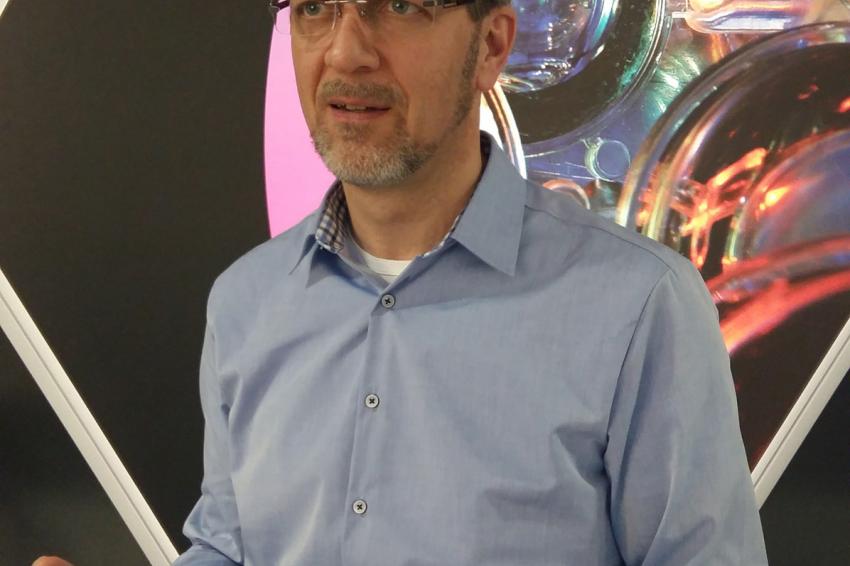Bright Lights with Multiple Optical Functions
Covestro’s Axel Wetzchewald Talks about Polycarbonates in Energy-efficient LED Lighting
Polymer manufacturer Covestro, formerly Bayer MaterialScience, is developing polycarbonate-based material solutions for energy-efficient LED lighting. Axel Wetzchewald, head of marketing for LED applications in the Europe, Middle East, Africa and Latin America regions, discusses the benefits of high-performance plastic and presents current developments.
Which materials do manufacturers of LED lamps want?
In general, they are looking for lightweight materials that are easily shaped and cost-effective to process. Other characteristics are dependent on the application. Lenses should be as transparent as possible, so that the LED light can be used to its full extent. Light-diffusing materials are often required for indoor applications such as lamp covers, so that nobody is blinded by glare from the point light sources. For cooling elements, on the other hand, thermal conductivity has a higher priority. This is where plastics have a good chance of replacing existing materials.
How does Covestro respond to such different requirements?
Covestro has been actively involved in developing energy-efficient and resource-friendly LED lighting for years. We have developed a whole range of material solutions to meet these requirements, all of them based on polycarbonate. These include Makrolon granules and sheets made from them, as well as Makrofol films.
Polycarbonate has qualities that are key for this. The plastic is crystal-clear, extremely robust and can withstand high temperatures. It is also easy to shape and can be processed effectively using extrusion and injection molding. We can also use special additives to give it light-diffusing or thermally conductive characteristics.
Are there specific customer requirements that go beyond that?
Yes, very individual requirements often arise when collaborating on a specific project. Take the Futurix lights from the Belgian manufacturer VLUX, for example. These are used both outdoors and in the damp and dusty environments of factory halls and parking garages.
In these settings, our product’s low tendency to warp and low shrinkage is a real advantage. Lamp covers made from it ensure the structure is sealed and prevent the penetration of dust and water. The Makrolon grade used in outdoor applications is also designed to be weather resistant. The diffuse material disperses the light very evenly and creates glare-free lighting.
What advantages does polycarbonate have over aluminum for cooling elements?
We developed Makrolon TC8030 for this application. This highly filled grade has outstanding thermal conductivity and can be processed just as effectively as our other polycarbonates. It is either impossible or extremely difficult to manufacture cooling elements with complex shapes using aluminum. The die-casting method most commonly used in this process is also not as cost-effective as manufacturing using injection molding.
We were able to prove the suitability of our polycarbonate in a joint project with Karelia University in Finland and the Finnish injection molding company Vesuto Oy. This project also confirmed the advantages over aluminum. As part of his thesis, designer Nikolai Ylimys used the material to create a cooling element for LED lights that was then manufactured by Vesuto Oy.
Are there trends in plastics for LED applications?
One current trend is to manufacture parts with multiple optical functions. Clear solid Makrolon SX Shark sheets, for example, are finished with a curved microprism look on one side and a glossy surface on the other. As a result, they combine the properties of high light permeability and excellent light guidance – perfect for achieving glare-free light. When you also consider the high impact resistance and outstanding fire performance, there are clear advantages over similar products made from other thermoplastics or glass.






